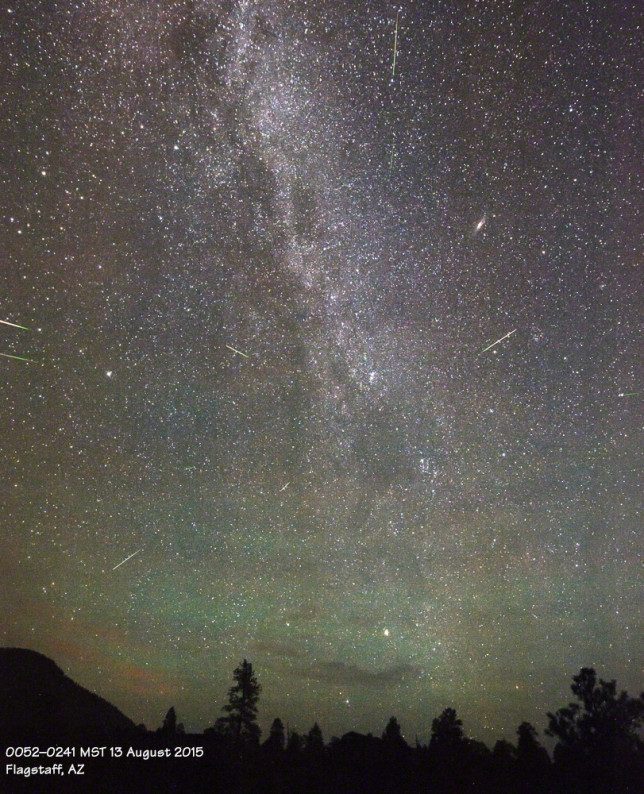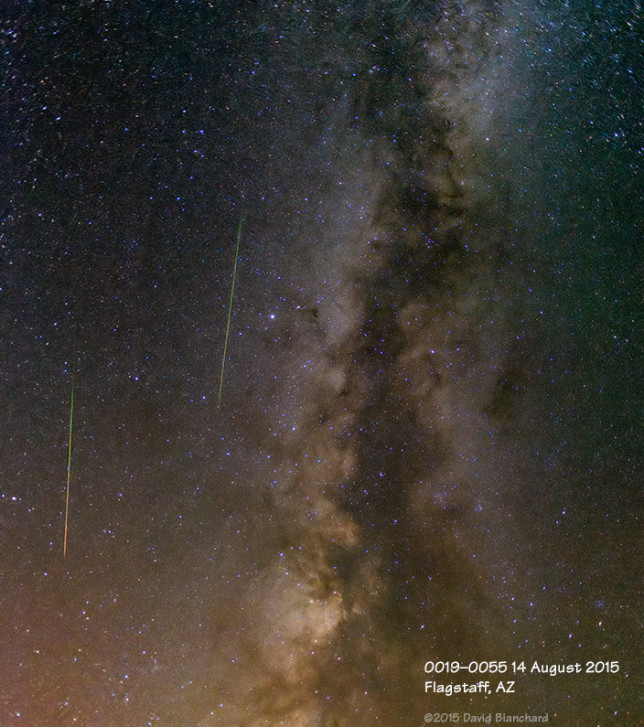The Perseid meteor shower of 2015 was better than average because it occurred one day before the new moon. The absence of moonlight meant that many fainter meteors were visible.
Although the shower peaked on the night of 12–13 August, meteors could be seen for several nights before and after. I went out for several hours photographing the shower on two different evenings and was happy to report that clear and dark skies produced a great event.
On the night of 12–13 August, I set up the camera on my equatorial mount so that I could track the radiant across the sky for several hours. I then combined the images with meteors into a single image that clearly shows the radiant. The result was pretty good although I’m certain I saw more meteors than the camera was able to capture.

In addition to the meteors, there was a prominent set of waves in the airglow visible low on the horizon. From wikipedia:
Airglow is caused by various processes in the upper atmosphere, such as the recombination of atoms, which were photoionized by the sun during the day, luminescence caused by cosmic rays striking the upper atmosphere and chemiluminescence caused mainly by oxygen and nitrogen reacting with hydroxyl ions at heights of a few hundred kilometres.
Here is a short time-lapse video of the multitude of waves present in the airglow that evening. (A higher quality version of the video can be found here.)
The following night also had meteors but at probably half the hourly rate as the previous evening. Once again I mounted the camera on the equatorial mount but this time I pointed the camera towards the southwest and aligned it with the Milky Way. I managed to capture two very bright meteors as they streaked from overhead down towards the horizon.

The last time the Perseids peaked at about the same time as the new moon was in 2007. In August 2018, the moon will be only 4% illuminated providing another dark sky opportunity.